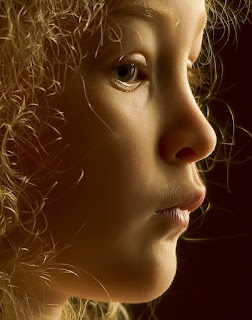
I first watched the Charlie Brown Christmas program fifty years ago and I do not believe I have missed a single season since then. It certainly is one of the most endearing and heartwarming programs of all time with its simple message about the true meaning of Christmas.
There is one scene in the show I especially like. It is the scene where Schroeder is playing his piano making beautiful Christmas music. Lucy asks him to play Jingle Bells and of course he begins playing in a style that sounds like an organ playing. Lucy interupts him and say's 'No, no...you know, Jingle Bells...' And Schroeder changes his tune to a more classic style. Of course Lucy interupts him again insisting that he play Jingle Bells the way she wants him to play it. He, somewhat disgusted with her by this time, pokes out with one finger the Jingle Bells tune...ding ding ding...ding ding ding...ding ding ding, da-ding...and she yells out 'That's It!'.
Even though I have watched that scene a hundred times, I still get a big kick out of it. The other day, I got to thinking. Seems like there is an interesting photography analogy hidng in there somewhere. I asked myself, "Am I a Lucy Photographer or a Schroeder Photographer?"
Think about that question for a minute. What does it actually mean? The way I see it is like this. A Lucy photographer is one who instinctively settles for the ordinary, making the same mistakes over and over, and rarely takes the time to learn how to create an extraordinary image, often snapping away in total bliss creating ordinary images and feeling good about it. They may not even be able to descern the difference. A Schroeder photographer is one who has advanced well beyond the ordinary and can instinctively create extraordinary images even from simple or ordinary situations.
Oddly enough, there is nothing wrong with being either one. A Lucy photographer will most often be the happier of the two, while a Schroeder photographer often over complicates the process and stresses out way to much.
In the early days of my photography, I was a Lucy, fumbling around thinking I was doing just fine, not understanding how Lucy-like I was...I was just happy to watch those imperfect black and white images magically appear in that tank of chemicals processed in my closet darkroom. Today, in the digital world, I tend to pursue perfection in my images and because I have never achieved said perfection, I find myself not so happy with the results most of the time. At times I find myself wishing I could rely more on my old Lucy instincts and less so on my Schroeder instincts.
Even so, a Schroeder can adapt his style, shift his focus, and create beautiful music. He can look beyond the obvious and visualize what is truly there. He may never truly achieve the desired results, but his understanding of what is possible drives him relentlesly forward. A Lucy, on the other hand, plows along doing the same ole thing all the time, never improving, never desiring to discover the nature of the creative process, settling instead on the imperfect bliss found in her results.
In the early days of my photography, I was a Lucy, fumbling around thinking I was doing just fine, not understanding how Lucy-like I was...I was just happy to watch those imperfect black and white images magically appear in that tank of chemicals processed in my closet darkroom. Today, in the digital world, I tend to pursue perfection in my images and because I have never achieved said perfection, I find myself not so happy with the results most of the time. At times I find myself wishing I could rely more on my old Lucy instincts and less so on my Schroeder instincts.
Even so, a Schroeder can adapt his style, shift his focus, and create beautiful music. He can look beyond the obvious and visualize what is truly there. He may never truly achieve the desired results, but his understanding of what is possible drives him relentlesly forward. A Lucy, on the other hand, plows along doing the same ole thing all the time, never improving, never desiring to discover the nature of the creative process, settling instead on the imperfect bliss found in her results.
Photography is a lot like music in a way, where a delicate melody of light plays across a composition and color theme. I call it Visual Music, or Symphonic Melody. Sometimes understanding our Lucy mindset helps us to simplify what we are doing and enjoy the process more personally. It makes life appear as less complicated. Growing toward being a Schroeder can be a painful process, one that takes time. On those days when we almost arrive, almost create what our minds eye desires, an inner sense of satisfaction encourages us to keep trying.
Hopefully, we do not allow our Schroeder to become disgruntled with our Lucy. Keeping an open mind about what we are trying to accomplish as photographers is important. By blending our Lucy with our Schroeder we may discover the results of our efforts are far more satisfying and probably less...ding ding dingish.
Hopefully, we do not allow our Schroeder to become disgruntled with our Lucy. Keeping an open mind about what we are trying to accomplish as photographers is important. By blending our Lucy with our Schroeder we may discover the results of our efforts are far more satisfying and probably less...ding ding dingish.


